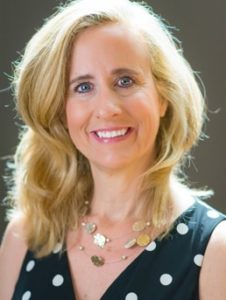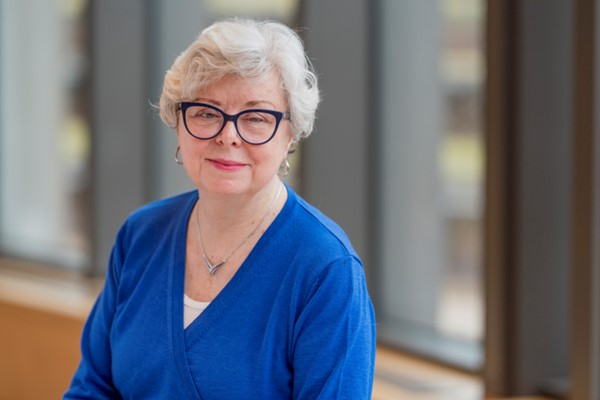Invited Addresses
Friday, November 18 | 9:00 AM – 10:00 AM
#1: Addressing the Mental Health Crisis Facing Youth: We Need to Respond Now to Promote the Growth of our Youth!
Friday, November 18 | 9:00 AM – 10:00 AM
Presented by:
Melissa Brymer, Ph.D, Psy.D., Director of the Terrorism and Disaster Program, University of California, Los Angeles and Duke University National Center for Child Traumatic Stress, National Child Traumatic Stress Network
Participants earn 1 continuing education credits

Melissa Brymer, Ph.D, Psy.D. is Director of the Terrorism and Disaster Program of the UCLA/Duke University National Center for Child Traumatic Stress and its National Child Traumatic Stress Network. In this capacity, Dr. Brymer been involved with the development of acute interventions, assessment, and educational materials in the area of terrorism, disasters, public health emergencies, and school crises. She is one of the primary authors of NCTSN/NCPTSD Psychological First Aid and Skills for Psychological Recovery and has served as a consultant for many Federal, state, and local agencies across the country and internationally after disasters, terrorism, school shootings, and other mass emergencies. Dr. Brymer was the lead advisor to the Newtown Public Schools Recovery Program and has led the NCTSN’s response to COVID-19. Dr. Brymer is also a Researcher at the UCLA David Geffen School of Medicine. Her research interests have been in the area of examining the effectiveness of acute disaster behavioral health interventions, examining the short and long-term impact of mass violence on children and families, and enhancing community practices after disasters.
Abstract: At the end of 2021, the U.S. Surgeon General’s Office released an advisory report regarding the urgent mental health crisis facing youth, exacerbated by the COVID-19 pandemic. In March of this year, the CDC also released new data shining additional light on the mental health consequences of the pandemic on youth disproportionately. Specifically, more than 140,000 U.S. youth have lost a primary or secondary caregiver due to the pandemic and there has been a significant rise in emergency room visits for suspected suicide attempts, especially for adolescent girls. Youth and their families have also experienced additional adversities including abuse; financial, home, and food insecurities; missed milestones/rites of passage; other community traumas (disasters, violence, hate), and lost time with peers in school, extracurricular activities, and cultural/religious activities. Additionally, the pandemic has shone a spotlight on discrimination, racism, and health disparities in the U.S. These reports recognize that mental health is an essential part of a youth’s overall health and that we need to act now to positively shape our youth’s development. This presentation will review key resources that educate and empower families to support their children and how we need to enhance youth’s connectedness at school. A public behavioral health approach will be discussed on how to identify and treat youth based on their current need for service using a DEI lens. The presentation will review different trauma and grief informed evidence-based interventions that can be used for different developmental levels and for different child serving systems. Finally, this presentation will also address the toll the pandemic has had on our workforce and ways to enhance provider wellness and mitigate secondary traumatic stress.
Long-term Goal:
Participants will be able to describe the elements for implementing a child and adolescent public behavioral health approach for addressing the mental health impacts of COVID-19.
At the end of this session, the learner will be able to:
- Name at least two action steps to address ways to enhance a youth’s mental health.
- Name three trauma and grief informed evidence based interventions for youth.
- Describe how to create a PRN coping plan to enhance my wellness.
Session Outline
- Review the mental health consequences of COVID-19 on youth
- Discuss a public behavioral health approach for addressing the long-term impact of COVID
- Identify resources that can assist providers and the families they serve to empower youth impacted by the pandemic
- Identify the impact of COVID on the workforce and identify resources to enhance provider wellness
Recommended Readings:
Protecting our Youth: The US Surgeon General’s Advisory (2021) https://www.hhs.gov/sites/default/files/surgeon-general-youth-mental-health-advisory.pdf
Jones SE, Ethier KA, Hertz M, et al. Mental Health, Suicidality, and Connectedness Among High School Students During the COVID-19 Pandemic — Adolescent Behaviors and Experiences Survey, United States, January–June 2021. MMWR Suppl 2022;71(Suppl-3):16–21. DOI: http://dx.doi.org/10.15585/mmwr.su7103a3
Mpofu JJ, Cooper AC, Ashley C, et al. Perceived Racism and Demographic, Mental Health, and Behavioral Characteristics Among High School Students During the COVID-19 Pandemic — Adolescent Behaviors and Experiences Survey, United States, January–June 2021. MMWR Suppl 2022;71(Suppl-3):22–27. DOI: http://dx.doi.org/10.15585/mmwr.su7103a4external icon
Saturday, November 19 | 9:00 AM – 10:00 AM
#2: Climate Change, Health and Equity
Saturday, November 19 | 9:00 AM – 10:00 AM
Presented by:
Cheryl L. Holder, Ph.D, Associate Dean of Diversity, Equity, Inclusivity and Community Initiatives, Herbert Wertheim College of Medicine, Florida International University
Participants earn 1 continuing education credits

Dr. Cheryl L. Holder, Fellow of the American College of Physicians has dedicated her medical career to caring for low wealth populations. She has served as a National Health Service Corp Scholar, as Medical Director of Jackson Memorial Hospital’s north Dade Health and as a participant on NIH and CDC health advisory and programmatic review panels. In 2009, she joined the faculty of Herbert Wertheim College of Medicine at Florida International University and currently serves as Associate Dean of Diversity, Equity, Inclusivity and Community Initiatives. She focuses on teaching the impact of social determinants of health, addressing diversity in health professions, increasing awareness of HIV prevention and health impact of climate change. Most recently, her TED Talk “The link between climate change, health and poverty” has had over 300K views.
Abstract: Scientists have concluded that climate change, shifts in temperatures and weather patterns over time can occur through the natural variations in the solar cycle. However, since the 1800s, human activities primarily due to burning fossil fuels like coal, oil and gas to power the industrial revolution, the climate has warmed to life threatening levels. This talk will review the science of climate change, the health impacts of the climate change, the populations that are impacted now, the role of clinicians and possible solutions for limiting planetary warming.
Long-term Goals:
- Attendees take individual and community wide actions to address climate change..
- Attendees advocate for policies that lead to reduce fossil use.
- Attendees advocate for equitable interventions to help people adapt.
At the end of this session, the learner will be able to:
- Describe four ways climate change impacts health.
- Describe vulnerable populations impacted by climate change.
- Identify two policies that affected vulnerable populations.
- Identify three ways clinicians can act for climate change solutions and improve health outcomes.
Session Outline
- What is climate change?
- Source of greenhouse gases
- Role of Health Sector
- Health Impacts
- Vulnerable Populations
- Policy drivers- 1619, Redlining, “NIMBY”
- Clinician’s Role
- Solutions
Recommended Readings:
Victor J. Dzau, M.D., Rachel Levine, M.D., George Barrett, M.B.A., and Andrew Witty, B.A Decarbonizing the U.S. Health Sector — A Call to Action. N Engl J Med 2021; 385:2117-2119. DOI: 10.1056/NEJMp2115675;
Eckelman MJ, Sherman JD. Estimated Global Disease Burden From US Health Care Sector Greenhouse Gas Emissions. Am J Public Health. 2018 Apr;108(S2):S120-S122. doi: 10.2105/AJPH.2017.303846. Epub 2017 Oct 26. PMID: 29072942; PMCID: PMC5922190.
The Climate Crisis and Clinical Practice Renee N. Salas, M.D., M.P.H.N Engl J Med 2020; 382:589-591DOI: 10.1056/NEJMp2000331
Saturday, November 19 | 2:00 PM – 3:00 PM
#3: The Role of the UPR Medical Sciences Campus in the COVID-19 Public Health Response in Puerto Rico
Saturday, November 19 | 2:00 PM – 3:00 PM
Presented by:
Carmen D. Zorrilla, M.D., Professor Obstetrics and Gynecology, University of Puerto Rico School of Medicine
Participants earn 1 continuing education credits

Dr. Carmen D. Zorrilla is a professor of obstetrics and gynecology at the UPR School of Medicine, certified by the American Board of Obstetrics and Gynecology and the American Academy of HIV Medicine. In 1987, she established the first longitudinal clinic for women living with HIV in Puerto Rico. She participated in the PACTG 076 as one of the first 10 pilot sites and was instrumental in making AZT available to pregnant women living with HIV in Puerto Rico. Her clinic, in which more than 600 infants have been born to HIV-positive women, has had a nearly zero transmission rate during the past 17 years. Dr. Zorrilla implemented a program for group prenatal care at the University Hospital, the first in Puerto Rico. This new model of care evidenced a reduction in preterm births. She is one of leaders who spearheaded the research response to the emerging Zika epidemic among pregnant women in Puerto Rico and established a multidisciplinary clinic for pregnant women with Zika. During the COVID-19 pandemic she spearheaded the development of a Molecular testing program at the RCM, a Phase III vaccine trial and a COVID Vaccine Center with a 97% vaccination rate of the faculty, students, and staff at the UPR-MSC. She is a member of the Scientific Coalition named by PR Governor Hon. Pedro Pierluisi to advise on issues related to the COVID pandemic response and to further incorporate the input of Science into public policy.
Abstract: By June 8, 2022, Puerto Rico has administered 7,107,447M of vaccine doses in a population of 3,076,212 M. The coverage of 95% people with at least 1 dose is greater than many States. Since protection wanes after 6 months,1.3M people need a booster. The success of the public health response was in large part due to planning and inclusion of most health care sectors in the response. In addition, PR has traditionally reported good vaccination rates among school-aged children. The UPR Medical Sciences Campus response to the COVID-19 pandemic and its sustained work includes several strategies. With 6 schools: Medicine, Dental Medicine, Nursing, Pharmacy, Health Professions and Public Health, a community of about 5,000 individuals (students, faculty, residents, and staff), we are educators, health care providers (HCP) and research leaders. Specifically, we will address research, molecular testing, and vaccination efforts. With a need for testing and diagnosis, as a step for research and management of cases, we established a molecular testing center in 2020. It allowed our investigators to offer participation in diverse research activities and access to testing for our students and staff. We were part of clinical trials for vaccines (Novavax) and new treatments (ACTIV-network). Once the testing program was ongoing and vaccines were available by December 2020, we established a Vaccine Center with active participation of the Deans and faculty of 5 schools: Medicine, Dental Medicine, Nursing, Pharmacy and Health Professions. Fair distribution of vaccines required assessment of exposure risks among students and faculty per school and program, planning for appointments according to capacity, dissemination of the plan with its specific rationale and monitoring to assure compliance of the plan. Our model decentralized the establishment of risk category of staff, faculty and students, and the appointment lists at the Deanship of each school. We determined the vaccination slots per day and assigned numbers to the Deanships which in turn provided a list by school per each vaccine day. All schools had a portion of the daily appointments to foster coverage. In 4 months, we reached more than 98% coverage of our community. One unique strategy was the use of therapy dogs for the vaccination efforts for children.
Long-term Goal:
Attendees will be able to describe diverse prevention and mitigation strategies useful for the COVID-19 pandemic in Puerto Rico and to learn about the integration of faculty and students from five health professional schools in a multidisciplinary and interprofessional approach to vaccination efforts.
At the end of this session, the learner will be able to:
- Review the local COVID-19 public health responses in the context of a world pandemic
- List innovative strategies for scientific collaboration among investigators with diverse interests
- Describe the use of therapy dogs in the vaccination efforts for children.
Session Outline
Puerto Rico and UPR Medical Science Campus COVID-19 Public Health Responses
To World Pandemic
Innovative strategies for Scientific collaboration
Investigators with diverse interests
Use of therapy dogs
Vaccination efforts for children at vaccine center
Recommended Readings:
Time-Varying Effectiveness of Three Covid-19 Vaccines in Puerto Rico
Mónica M. Robles Fontán, Elvis G. Nieves, Iris Cardona Gerena, Rafael A. Irizarry
doi: https://doi.org/10.1101/2021.10.17.21265101
accessed at: https://www.medrxiv.org/content/10.1101/2021.10.17.21265101v2
Sunday, November 20 | 10:00 AM – 11:00 AM
#4: Evidence for Emergency and Disaster Response: We Need a Faster Lane for Science
Sunday, November 20 | 10:00 AM – 11:00 AM
Presented by:
Enola Proctor, Ph.D., Professor Emeritus, Washington University in St. Louis
Participants earn 1 continuing education credits

Dr. Proctor is Shanti K. Khinduka Distinguished Professor Emeritus. The National Institute of Mental Health has supported her research and training grants for 29 consecutive years. She has pioneered the field of dissemination and implementation science, leading teams to distinguish, clearly define, develop taxonomies, and advance the conceptual, linguistic, and methodological clarity in the field. She directs the Implementation Research Institute, a training program in implementation science funded by the National Institute for Mental Health. Proctor was a member of the inaugural class of fellows in the American Academy of Social Work and Social Welfare. Her awards include Washington University’s Arthur Compton Holly Distinguished Faculty Award, the Society for Social Work and Research’s Distinguished Research Award, the National Association of Social Workers’ President’s Award for Excellence in Social Work Research, and the American Public Health Association Stephen M. Banks Award for Outstanding Mentoring in Mental Health Services. She has advised the National Institutes of Health and the World Health Organization on several implementation science projects in low and middle income countries, including current work on COVID vaccine implementation.
Abstract:
Health emergencies and disasters require rapid response. Front line providers, policy makers, and health system administrators need solid evidence of how to prepare and react, and they need that evidence in short order. Yet many emergencies are novel, as with the COVID-19 pandemic. How can we know what to do in situations never faced before? How can translational researchers more effectively move evidence from the lab into the real world even as evidence evolves? And how can cognitive and behavioral scientists tackle the fact that evidence-based recommendations are often met with indifference, resistance, and rage?
This presentation addresses the challenge of how to accrue new, and how to act on existing, evidence more rapidly. The magnitude of this challenge is demonstrated in the fact that, even in the best of times, Americans receive about 55% of clinical interventions known to benefit health.
Implementation science informs the use of evidence-based interventions in real world settings. However along with intervention development, implementation science has not met the challenge of equipping providers and systems for rapid response. Therefore, the presentation will address the importance of faster implementation, urging attention to capturing speed metrics in implementation studies and to identifying factors associated with faster or slower implementation. How fast can we implement? How fast should we implement? Finally, the presentation will identify research priorities for building a repository of ready-to-implement change techniques, especially those that tackle the mechanisms of attitude and behavior change in times of health emergency and disaster.
At the end of this session, the learner will be able to:
- Describe the importance of implementation science for emergency and disaster response.
- Identify the complexities and importance of faster translational science.
- Identify research priorities to build a repository of implementation strategies for emergency and disaster preparedness.
Session Outline
I. Disasters require application of evidence that is new and often incomplete. This challenge is made more daunting by the fact that in routine care, implementation of proven interventions is inequitable, slow, and incomplete.
a. Evidence is always evolving, and emergencies may demand answers that researchers do not yet have, as with COVID-19.
b. The public often responds to novel crises with a mixture of hope for solutions and skepticism or doubt about science, especially fast science.
II. Implementation science offers a distince lane of science: one focused on ensuring that high quality care is available and delivered equitably. However along with intervention development, implementation science has not met the challenge of equipping providers and systems for rapid response.
a. Speed of implementation is complex: what is fast enough? Is there a “too fast?”
b. Metrics in intervention development and implementation research should capture speed along with the factors associated with faster or slower implementation.
III. Emergencies and disasters demand evidence:
a. Cognitive, behavioral, and organizational change researchers should identify mechanisms of change associated with faster and more effective emergency response.
b. Implementation researchers need to develop repositories of ready-to-implement change techniques, especially those that are effective for attitude, behavior, and system change in times of health emergency and disaster.
Recommended Readings:
Pilar, M, Elwy, A. Rani, Lushniak, Larissa, Huang, Grace. McLoughlin, Gabriella M., Hooley, Cole Hooley, Nadesan-Reddy, Nisha, Sandler, Brittney, Moshabela, Mosa, Alonge, Olakunle, Geng, Elvin Geng, Proctor, Enola. (in press). A Perspective on Implementation Outcomes and Strategies to Promote the Uptake of COVID-19 Vaccines. Frontiers.
Proctor, E., Ramsey, A. T., Saldana, L., Maddox, T. M., Chambers, D. A., & Brownson, R. C. (in press). A Framework to Assess Speed of Translation of Health Innovations to Practice and Policy. Global Implementation Research and Applications.
Proctor, E. K., & Geng, E. (2021). A new lane for science. Science, 374(6568), 659–659. https://doi.org/10.1126/science.abn0184
